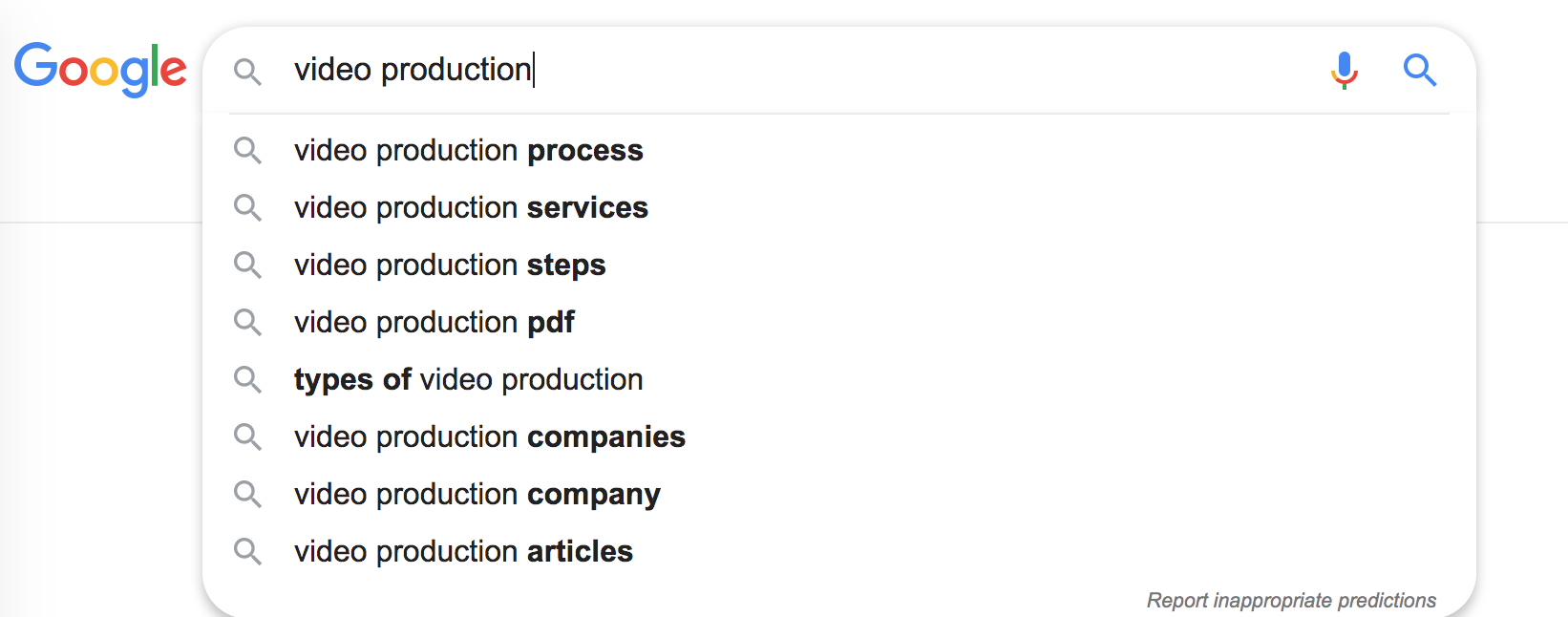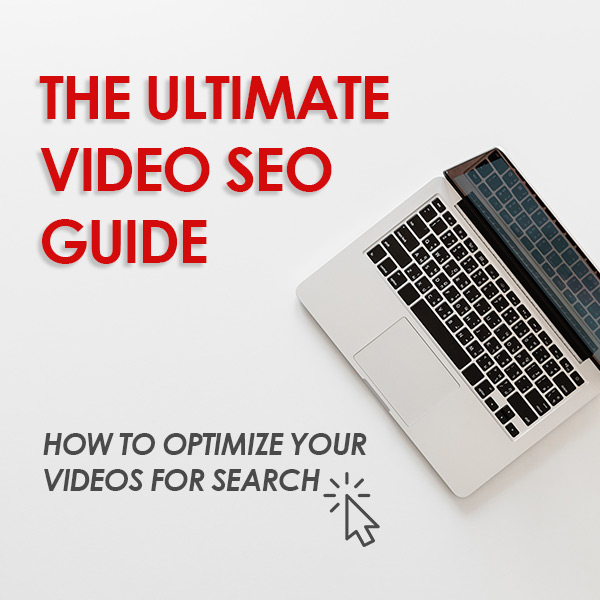Video SEO is the behind the scenes magic that will set your video apart from the rest. You don’t want to spend time, energy, money, and resources on great video production just for a few views, right? In order to maximize views and see a high ROI, you must optimize your YouTube videos to be seen. This guide collects all you need to know from video SEO experts across the web. Whether it’s a corporate video production or a vlog, every video produced should serve a purpose and inform customers. However, you won’t be able to do that if no one can find your content via search! Video SEO is the next step to making your videos rank higher quickly and in turn, result in more conversions. This Video SEO guide starts with the Skyscraper Technique that is the framework of your video strategy, and then will take you step by step on what it takes to increase video views for all different types of videos.
Video SEO Guide
Before you dive right in, one of the best ways to develop your video SEO strategy is through the skyscraper technique, created by Brian Dean. This is the first step that will give us a big picture of your overall strategy. In this technique, we see more quality conversions and increased views. Take a glimpse at how you build a solid foundation and build your online presence to skyscraper heights.
- Connector.
Research Your Content
Look around at those who are already successful in ranking for the topics you want to cover. What keywords are they using? Where do the opportunities lie? Take note of related searches and choose your video topics accordingly.
- Connector.
Do It Better
Once your video topic is chosen, map out your content and do it better. This means go as in-depth as possible, offer unique insight, create cleaner graphics and more. Taking the research you have found and capitalizing on it will result in higher rankings.
- Connector.
Get In Front of The Right People
Lastly, video SEO is only successful when it reaches the right audiences. Don’t be afraid to reach out to specific followers via newsletter to drive more traffic. If they’ve shown interest in the past, this means they will probably lead to higher conversions as well!
Now, what do we do next? Follow this video SEO guide and watch your “skyscraper” soar to new heights.
1. Research: Choosing a Keyword
Next up, even before creating your video, you must conduct research. What kind of content are you making and who do you want it to reach?
To do this, look at other competitors and the keywords they’re choosing. Look at this on Google and YouTube, keeping in mind search trends will differ for each. In order to explore keywords, start with one (for instance: video production) and look at suggested terms that appear. This can give you an idea of what people are searching for.
Then, choose a keyword with high search volume and ideally low competition for up-to-date content. Using tools like SEMrush and Keyword Planner will assist in this process. Now you’re ready to move onto the actual video production.

2. Creating Your Videos
The first step in creating your video is writing the script. This is an important part of the video optimization process and increasing views. YouTube not only wants to see your keyword in your video titles and descriptions, it wants to hear it too. This means you should match your content with the chosen keyword. YouTube is all about promoting quality content to viewers so it checks to make sure you are uploading content that is useful and will be beneficial. Once you prove yourself as a quality content channel, you’re more likely to be ranked higher.
On the same note, the goal of quality video content is having people actually watch, and for as long as possible. This means making longer, but informative, video content. If someone watches half of your video, what would be better – 30 seconds of a 1 minute video or 5 minutes of a 10 minute video?
Keep in mind, longer doesn’t directly relate to better. Start with a solid hook to get viewers interested, but then follow it with interesting, in-depth content that will keep them watching and sharing.
3. Optimizing Online
Once you have your video filmed and uploaded, it’s time to become a video marketing expert. Things like tagging, titles, thumbnails, descriptions and so on are all crucial for video SEO. Making sure you are doing all of these small tasks with the research you have conducted so you can do it better than competitors is key.
Things that might be different than what you’ve heard:
- When it comes to tags, choose quality over quantity. Don’t just flood YouTube with nonsense; you want to make sure every tag helps YouTube realize what your video is about.
- Front load your keyword in your video title. It’s not enough just to have it in there. For best results, put it at the front.
- Use long, detailed descriptions, BUT make the first few sentences as catchy as possible. Longer descriptions give more opportunity to be ranked, while the first few sentences are what will get people clicking.
4. Promoting
Ready to put your video marketing hat on? Promoting your video content is obviously a huge part of growing a following and ranking high. There are many tactics you can take to marketing your video without spending much.
Here are some organic strategies to increasing views:
- Share it on your social media with a call to action
- Include it in your next newsletter
- Promote other videos on your end screen
- Place it on your website or in your latest blog
Additionally, using SEM campaigns are a great way to give your videos a head start. Place them in front of specific audiences interested in your topic and you’ll create momentum in views. The first 24 hours of launching a video are the most important!
5. Stay Up-to-Date
This goes for video SEO as well as all content creation… stay up-to-date! Not only should you make sure the topics you pick are current, but go back and keep older content relevant as well. You want to make sure you’re providing your audience with trusted and useful content. This also means seeing other peoples’ blogs and videos and making a newer, more current version of the information.
When crafting your video timeline, think of incorporating evergreen content that is relevant for years to come. If you do this, making tweaks to your video descriptions and tags will be easy.
Well, that’s the bulk of it! Take this information, apply it to your next video marketing campaign, and you’re sure to get results. Make sure to track changes you make and appeal to your specific audience.
For more tips on video production and digital marketing, take a look at some of our other blogs.
Reach Out To Us
With experts in both video production and digital marketing, we might be the teammates you've been looking for!
Let's Chat
